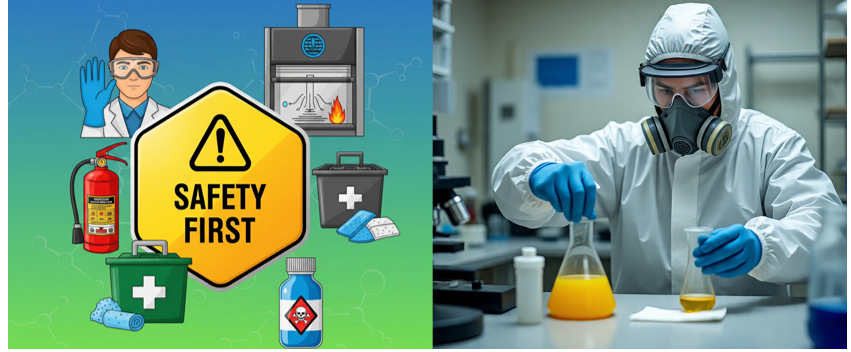Chemical Storage and Handling Safety Precautions
There are several accidents happened in chemical industries because of improper safety measures taken during storage and handling activities. Therefore, it is necessary to take responsibility and ultra precautions while handling chemicals.
Ganpat Shinde
7/31/20252 min read


When it comes to maintaining a safe and healthy workplace, proper chemical storage and handling are essential. Whether you're working in a laboratory, manufacturing unit or construction site, mishandling chemicals can lead to serious accidents, health hazards and even environmental damage. This blog will guide you through essential precautions for safe chemical storage and handling.
Why Chemical Safety Matters
Chemicals are vital to many industrial processes, but they also pose risks such as fire, explosion, poisoning and corrosion. Inadequate storage or poor handling can result in:
Injuries or fatalities
Damage to property and equipment
Environmental contamination
Regulatory fines and legal action
Safe Chemical Storage Practices
1. Segregate Incompatible Chemicals
Store chemicals based on their compatibility. For example, acids should be stored separately from bases, and oxidizers should be kept away from flammable materials. Always refer to the Material Safety Data Sheet (MSDS) for storage guidelines.
2. Use Proper Containers and Labels
Ensure chemicals are stored in their original containers with intact labels. If chemicals are transferred to secondary containers, label them clearly with the chemical name, hazard class and expiry date.
3. Store in Designated Areas
Use well-ventilated, dry and cool areas specifically designed for chemical storage. Flammable chemicals should be stored in approved flammable cabinets and corrosives should be kept in corrosion-resistant cabinets.
4. Maintain Inventory and Signage
Keep a current inventory of all stored chemicals and post clear signage indicating hazards in storage areas.
Safe Chemical Handling Precautions
1. Wear Proper Personal Protective Equipment's (PPE)
Always wear appropriate personal protective equipment (PPE) such as gloves, goggles, aprons and respirators based on the chemical and task.
2. Read the Material Safety Data Sheet (MSDS)
Understand the chemical's hazards, handling instructions and emergency measures before using it. MSDS sheets should be accessible at all times.
3. Use Proper Tools and Techniques
Avoid direct contact with chemicals. Use tools like funnels, pumps or tongs for pouring and transferring chemicals safely.
4. Ensure Good Ventilation
Work in areas with adequate ventilation or use fume hoods to avoid inhaling toxic vapors.
5. Train Employees
Regularly train all personnel on chemical hazards, emergency response and first-aid procedures.
Emergency Preparedness
Spill Kits: Keep spill containment kits nearby and ensure employees know how to use them.
Eye Wash Stations & Showers: Install emergency eyewash stations and safety showers in areas where chemicals are handled.
Fire Extinguishers: Place suitable fire extinguishers near storage and handling areas.
Conclusion
Safety in chemical storage and handling isn't just a statutory requirement — it is a responsibility. By following the right precautions, using proper storage techniques, and educating employees, we can create a safer work environment and prevent incidents before they happen.
